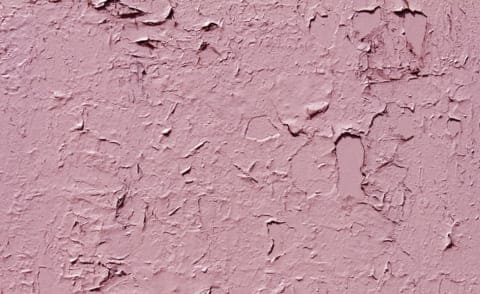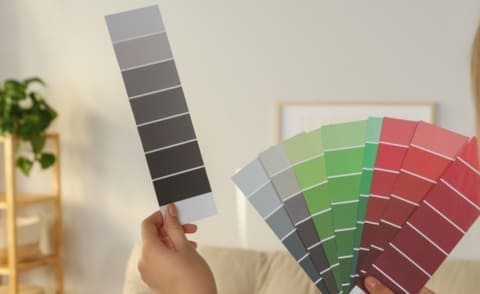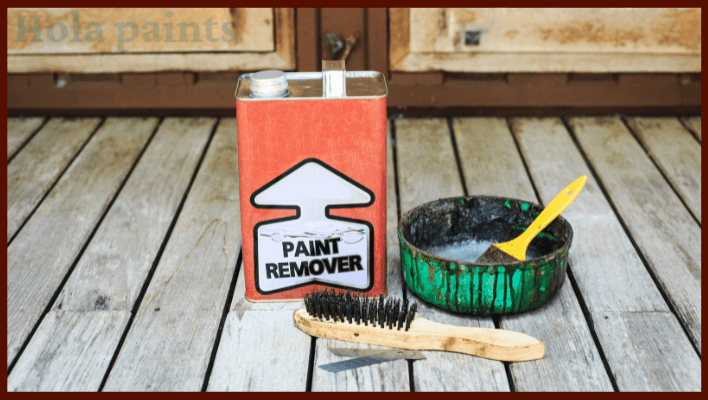Imagine you’re in the middle of a home improvement project, brushes and roller in hand, ready to transform your space with a fresh coat of paint. But there’s a sudden realization – you’ve run out of tint for your base paint, and you’re left wondering, Can I use base paint without tint?
It’s a real dilemma with no one-size-fits-all answer. In this article, I’ll share my personal experience and provide practical solutions and creative workarounds to tackle this issue. So, if you’ve faced the frustration of running out of tint in the midst of your painting project, read on for some insights on how to make the best of the situation and still achieve the color you’re aiming for.
Table of Contents
- Quick Summary
- What Is Base Paint?
- What does must be tinted mean on paint?
- Base Paint
- Colorant
- Mixing
- Testing
- Application
- Practical Example: (Must be Tinted Paint)
- Start with the Base Paint
- Add White Paint
- Testing
- Adjustments
- Can I Use Base Paint Without Tint?
- Paint Base Types
- Numbered Base Labels:
- Base 1
- Base 2
- Base 3
- Base 4
- Descriptive Base Labels:
- White Base
- Pastel Base
- Light Base
- Medium Base
- Deep Base
- Accent Base
- What to do if Base Pant is Mistakenly Used Without Tint?
- Let It Dry
- Quantity Matters
- Not All Paints Can Change
- Buy New Paint
- Paint Again
- How to Tint Paint?
- 1. Color Matching:
- 2. Base Color Selection
- 3. Calculate the Base Paint Quantity
- 4. The Tinting Process:
- What is tint base paint used for?
- Custom Color Matching
- Home Painting
- Repainting and Touch-Ups
- Decorative Finishes
- Exterior Painting
- Commercial and Industrial Applications
- Conclusion On can i use base paint without tint :
- FAQS
- Why do you tint paint?
- What happens if you add too much tint to paint?
- What is the difference between tint and paint?
- Martina Hitchcock
Quick Summary
Using base paint without tint is possible, but it won’t give you the color you want. Base paint is like a blank canvas, and adding tint gives it the desired hue. Without tint, the paint will stay white or its natural color, limiting your customization options.
Tinting is essential for achieving your desired color and coverage. In specific cases like using it as a primer or for artistic projects, untinted base paint may be suitable. Additionally, when applying untinted base paint over a previous paint layer, there’s a risk that the old color may bleed through, affecting the final result.
What Is Base Paint?
Base paint is distinct from primer. While primer is typically used as an initial coat before painting, base paint serves a different role. It acts as the canvas for creating a diverse range of colored paints.
Base paint is not a complete paint on its own. When you open a can of base paint, it often appears white, but the majority of it is transparent. This clear component is designed to blend with the materials of colorants, enabling it to accept pigments and create the final tint. As these colorants merge with the clear base, the paint’s color undergoes a transformation, offering a versatile array of hues for your painting projects.
In summary, base paint is the foundation for crafting various paint colors, not just for priming walls.
What does must be tinted mean on paint?
Tinting paint involves the process of adding colorant to a base paint, which is typically performed by professionals at paint stores or by professional painters. It provides customers with the flexibility to select from a broad spectrum of colors, allowing them to achieve their desired paint color rather than being limited to the pre-mixed colors available on the shelves.
Base Paint
Paint manufacturers produce a variety of base paints with different finishes (such as flat, satin, semi-gloss) and types (like latex or oil-based). These base paints usually start as white or neutral colors, serving as a blank canvas for creating custom colors.
Useful Resource: Learn more about the sizes of paint can.
Colorant
To achieve the desired color, paint stores or professional painters use a system of colorants consisting of pigments and dyes in various concentrations. These colorants come in a wide array of colors and can be mixed in different proportions to produce the specific color requested by the customer.
Mixing
The paint store or painter employs a computerized system to precisely measure and blend the chosen colorants into the base paint. This process ensures accuracy and consistency in achieving the desired paint color, making it easier to replicate the same color in the future.
Testing
To confirm that the tinted paint matches the customer’s expectations, a small sample is often provided. This allows the customer to assess the color and make any necessary adjustments. If the color needs fine-tuning, additional tinting can be performed until the desired shade is achieved.
Application
Once the customer approves the color, the tinted paint is ready for use in various applications, such as painting walls, furniture, or other surfaces, in line with the intended project.
Practical Example: (Must be Tinted Paint)
In my case, I have a can of paint in a bright and vibrant red color, but you want to achieve a softer, pastel shade of red for your project. Tinting paint at home involves adjusting the color to your preference. In this case, you could achieve the desired pastel red by adding a small amount of white paint to the bright red paint.
Start with the Base Paint
Begin with your original bright red paint, which serves as the base color.
Add White Paint
Gradually add white paint to the red paint, stirring and mixing thoroughly as you go. Adding more white paint will result in a lighter and softer shade of red. Continue this process until you achieve the pastel red color you desire.
Testing
It’s important to test a small sample of the mixed paint to ensure it matches your vision. You can apply a small amount to a test surface or paint swatch to verify the color.
Adjustments
If the color isn’t exactly what you want, you can continue to add more white paint or adjust the proportions until you achieve the desired pastel red.
Tinting paint at home allows you to create a customized color that fits your specific needs.
Can I Use Base Paint Without Tint?
Using base paint without adding tint is technically possible, but it’s not the recommended approach if you aim for a satisfactory outcome. The reason behind this is that untinted base paint lacks the necessary colorant to provide proper coverage and achieve the desired color.
Imagine you want to paint your walls a crisp, pure white. Even in this case, it’s important to add colorant to the base paint. Without the colorant, the paint won’t have the right amount of pigment, potentially leading to issues. For instance, if you attempt to cover an existing color with untinted white paint, there’s a significantly higher chance that the previous color will show through, as compared to using properly tinted paint.
Painting can get tricky, especially when working with untinted deep base paint. Deep base paint contains minimal white pigment, which enables it to absorb more colorant and create richer colors when tinted. However, in its untinted form, it dries somewhat clear and provides little to no coverage.
Inshort, paint must be tinted before use to achieve good coverage and the correct color. The use of colorants is crucial for achieving the best outcomes in your painting project. Learn more about the tint and shade!
Paint Base Types
Paint bases come in several variations, each serving a unique purpose when it comes to achieving the right paint color. They can be categorized in two ways: using numbers or descriptive names.
Let’s discuss the various types of paint bases and their characteristics.
Numbered Base Labels:
Base 1
This base contains a substantial amount of white pigment and is best suited for light colors like whites and pastels.
Base 2
Slightly darker than Base 1, this is ideal for hues that lean towards the lighter side.
Base 3
Perfect for mid-toned colors, Base 3 contains less white pigment, allowing it to accept a greater amount of colorant.
Base 4
Designed for dark paints, Base 4 contains the least white pigment and can incorporate more colorant, making it suitable for achieving deep, dark colors.
Descriptive Base Labels:
White Base
This base contains the most white pigment, making it perfect for achieving the lightest colors.
Pastel Base
Slightly less white pigment than White Base, this is great for pastel shades.
Light Base
A versatile option for colors leaning towards the lighter side.
Medium Base
Suited for medium-toned colors.
Deep Base
Ideal for creating dark and rich colors, Deep Base contains the least white pigment among these options.
Accent Base
If you’re aiming for rich and vibrant colors, Accent Base is your go-to choice. It contains very little white pigment, allowing it to accept more colorant, resulting in striking, intense colors.
It’s essential to note that base paint is not the same as a primer. While primer is used as a base coat before applying a new color to a surface, base paint can be used on its own or mixed with colorants to create the desired paint colors.
What to do if Base Pant is Mistakenly Used Without Tint?

If you’ve accidentally used plain base paint without any color, here’s how to fix it:
Let It Dry
First, wait for the base paint without color to completely dry.
Your Choices: You have two options:
- If you used just a bit of the plain paint, you can take it back to the store. They can add color to it, and you can use it as you originally planned.
- If you used a lot of plain paint, it’s better to buy new colored paint and start over.
Quantity Matters
Adding color to paint in a store usually works for full cans or buckets. If you’ve already used some, it can be tricky because the amount of color added might not be just right for what you have left.
Not All Paints Can Change
Some base paints cannot be transformed into specific colors. For example, making a Deep Base or Base 4 paint white might not work.
Buy New Paint
If adding color to your existing paint doesn’t work, it’s best to buy new paint. You can choose either colored paint or base paint that can be tinted at the store to get the color you want.
Paint Again
Once you have the corrected paint, go ahead and paint your walls. You shouldn’t have any problems, and the final result should be what you expected.
This way, you can easily fix the mistake if you used plain base paint, and you’ll know how to pick the right type of paint for your project.
How to Tint Paint?

Here are the step by step guide for you’;
1. Color Matching:
When I’m ready to tint my paint, the journey begins by choosing the color that truly speaks to me. I like to head over to my local home improvement store, flip through those colorful paint palettes, and search for a shade that’s as close to my heart’s desire as possible. In fact, I often go for a shade that’s slightly darker than my intended color. Why? Well, darker tints are my secret weapon because they contain more pigment. Suppose I’m aiming for a soft, sky-blue color for my bedroom. I might pick a palette with various blues and select one that’s a shade or two deeper than my ideal blue.
2. Base Color Selection
Once I’ve chosen my dream color, the next step is to figure out which base color will help me achieve that perfect shade. If I’m aiming for a lighter tone, I’ll go for a base paint that includes white. It’s crucial to ensure that the base color closely matches what I have in mind. For example, if I want to achieve a pastel pink for my daughter’s room, I’d choose a base color that’s a soft white-pink.
3. Calculate the Base Paint Quantity
Now, let’s crunch some numbers. I need to calculate the amount of base paint required to cover my project. As a rule of thumb, I usually need about one-fifth of the total volume of my selected base color to blend with the tint. For instance, if I’m planning to repaint my living room with a beautiful shade of deep olive green, I’d make sure to have enough base paint to cover the entire space.
4. The Tinting Process:
This is the exciting part. I open the paint cans, give them a thorough stir to mix the base color. Then, I start adding a few drops of my chosen tint into the base paint. I keep stirring until I get the exact color I want. For instance, if I’m working on a DIY project to give my old wooden bookshelves a new life, I’d mix a deep mahogany tint into my base color to achieve a rich, elegant finish.
With my paint now customized to perfection, I’m all set to bring my painting project to life. That’s how I tint paint!
What is tint base paint used for?
Tint base paint is a type of paint that serves as a neutral or off-white foundation for creating custom paint colors. It’s a versatile option widely used in various painting applications.
Here’s how tint base paint is commonly utilized:
Custom Color Matching
Tint base paint is employed by paint professionals and stores to craft custom colors for customers. They achieve this by adding specific colorants or pigments to the tint base, allowing them to match or create a diverse range of colors according to a customer’s preferences.
Home Painting
Homeowners often turn to tint base paint when they want to paint their interiors or exteriors with a specific color. This way, you can make your living spaces feel uniquely yours by adding your personal touch to them.
Repainting and Touch-Ups
Tint base paint is valuable for repainting or touch-up projects where precise color matching is essential. If you have leftover paint from a prior job, you can use tint base paint and add the same colorants to maintain consistency.
Decorative Finishes
Tint base paint is indispensable for certain decorative painting techniques, such as faux finishes or textured coatings, where creating custom colors is a key element.
Exterior Painting
It’s not limited to indoor use; tint base paint is also a go-to choice for painting the exteriors of buildings and homes when specific colors are desired to enhance curb appeal.
Commercial and Industrial Applications
Tint base paint finds its place in commercial and industrial settings as well, often used for painting machinery, equipment, and structures where specific colors are essential, either for branding or safety compliance.
Conclusion On can i use base paint without tint :
when considering the question, “Can I use base paint without tint?” the answer is yes. Base paint, often available in neutral colors, offers a versatile foundation for your painting projects. By adding tint or pigment, you can achieve your desired custom color. This flexibility empowers you to create a personalized palette, making base paint without tint a practical choice for your creative projects.
FAQS
Why do you tint paint?
Tinting paint serves several purposes:
- Tinting the primer to the color of the finished paint reduces the number of coats required, saving time and effort.
- It enables you to select a color that fits your taste or complements your surroundings.
- Tinting is valuable when you need to match existing colors for touch-ups or seamless repainting.
- Tinted paint adds a touch of personality and style, enhancing the visual appeal of a space or object.
What happens if you add too much tint to paint?
When you add excessive tint to paint, it can lead to a few issues:
- The resulting color might not match your intended shade, often becoming overly dark or intense.
- Excessive tinting can alter the paint’s texture, making it thicker and potentially less resilient.
- The paint’s ability to cover surfaces effectively may decrease, requiring additional coats. Also, the drying time might be affected, leading to longer waiting periods.
What is the difference between tint and paint?
The difference between tint and paint lies in their composition and purpose:
- Tint: Tint is the coloring agent added to a neutral paint base. It doesn’t have the same coverage and consistency as paint and is used solely for achieving specific colors.It’s like soft pastels in a painting.
- Paint: Paint is the final product that combines the neutral base and tint. It protects and beautifies surfaces. It’s like the bold strokes of a painting.

Martina Hitchcock
Martina Hitchcock is a versatile author with expertise in different fields. As a paint sprayer expert, she has in-depth knowledge of paint spraying techniques, tools, and equipment. Martina is also an experienced home remodeler who has worked on various projects, including kitchen and bathroom renovations, flooring installations, and room additions. Her knowledge of home improvement and remodeling is extensive, and she enjoys sharing her insights and tips with readers. You can follow her on Facebook.


